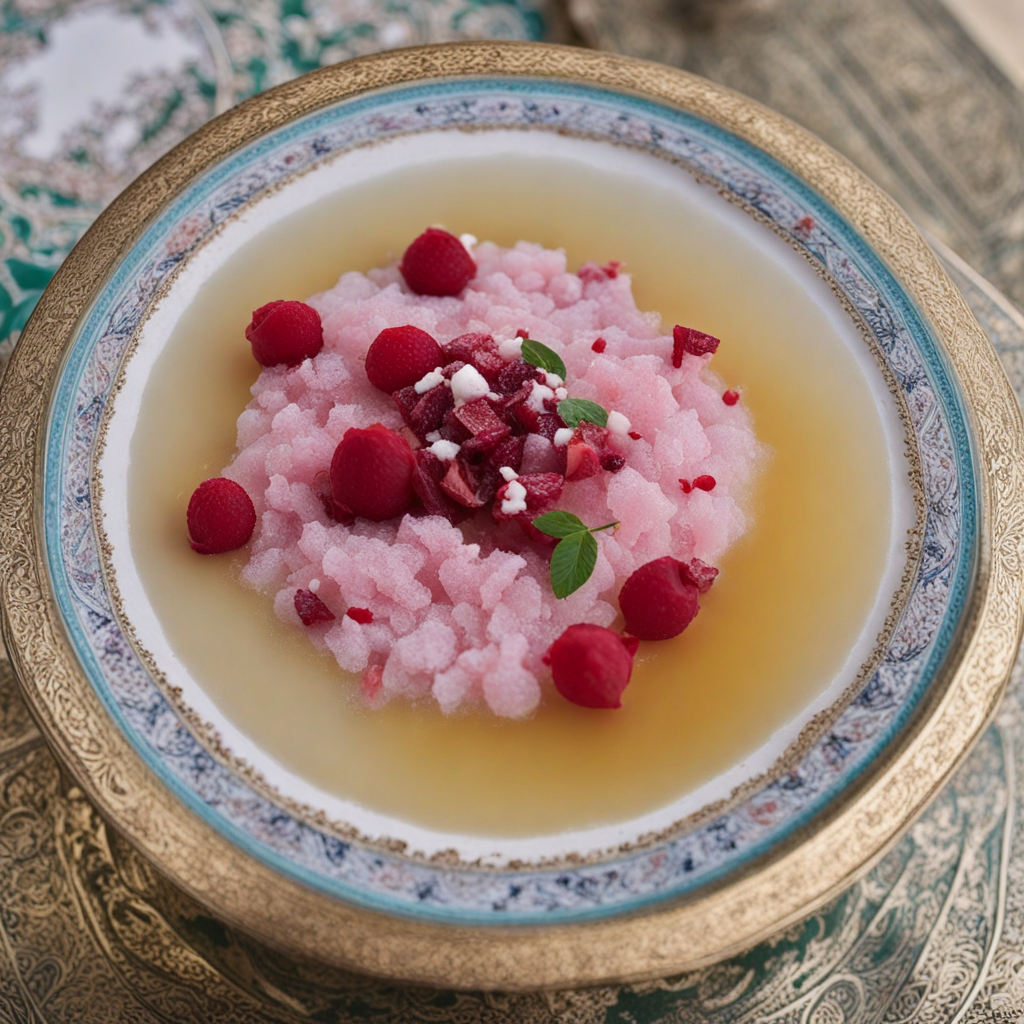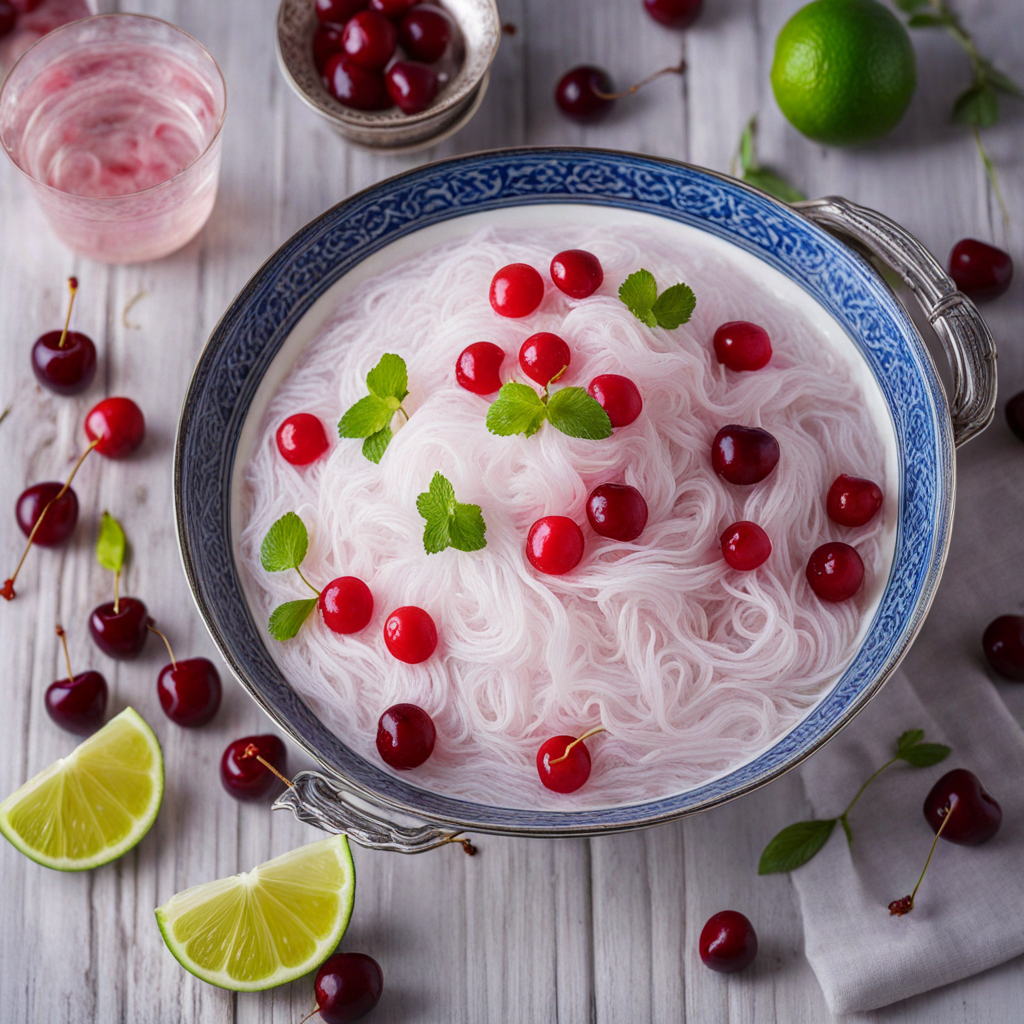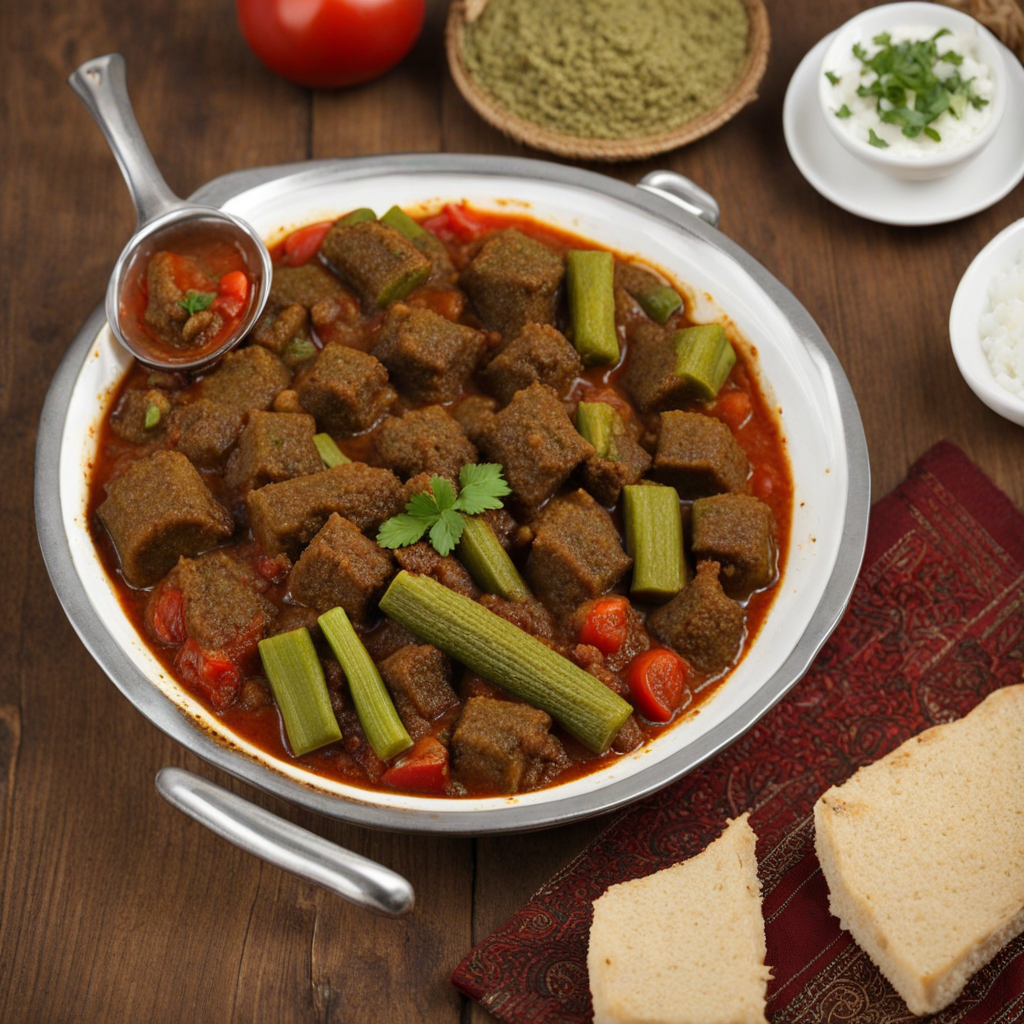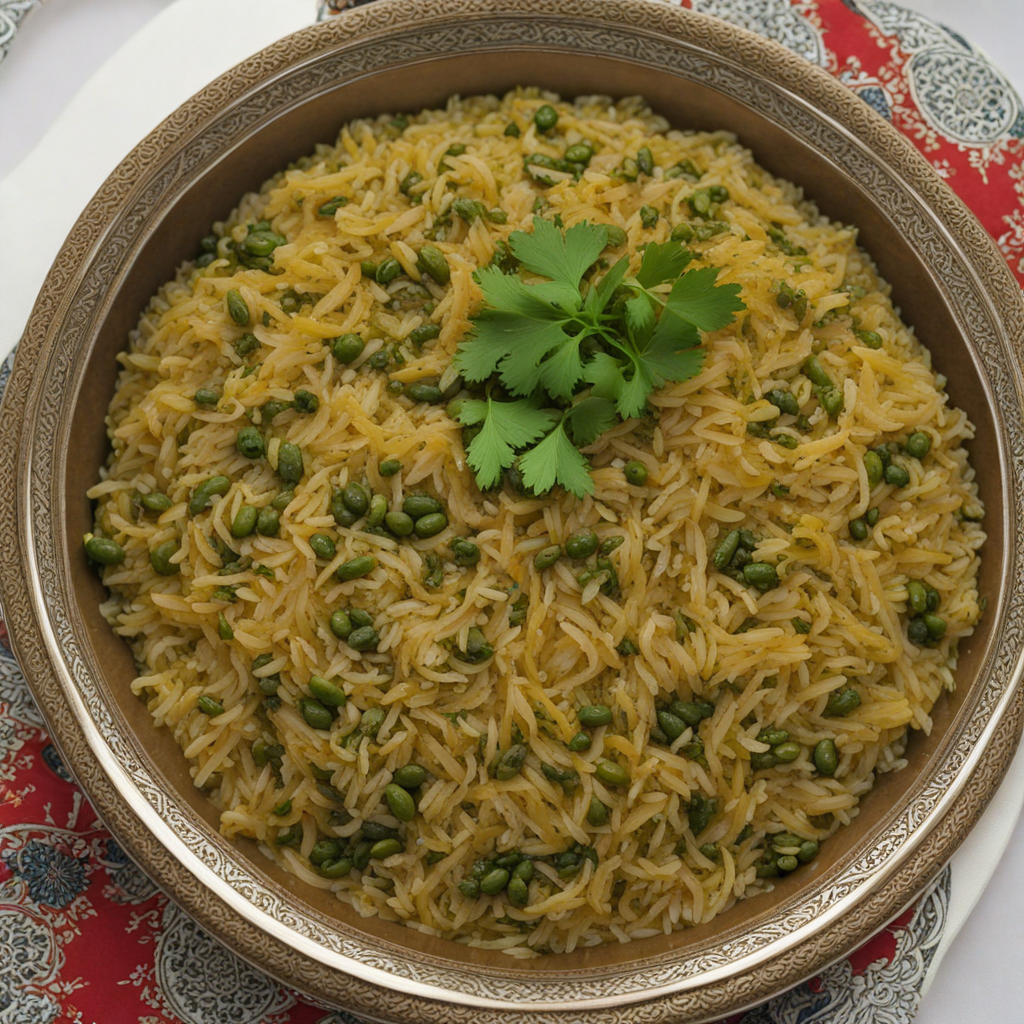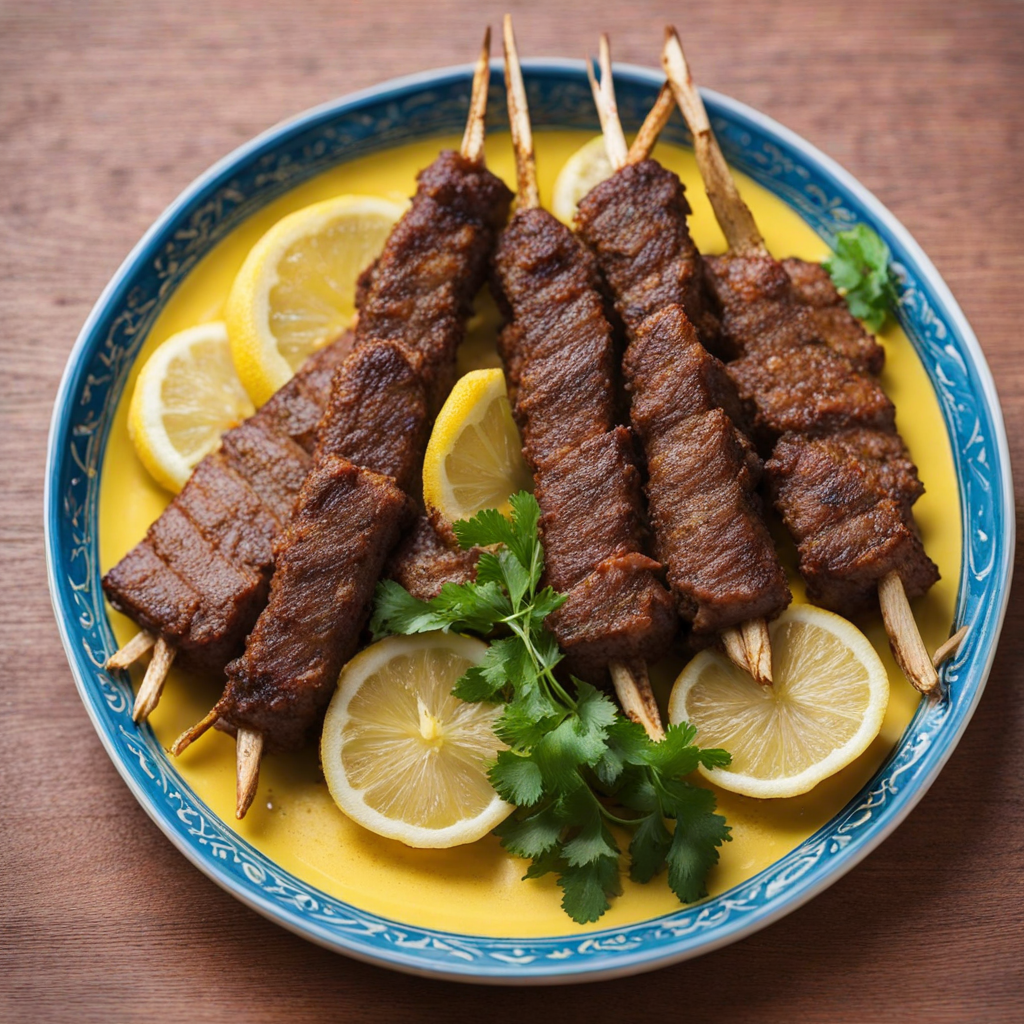Yakh Dar Behesht
Yakh Dar Behesht is a delightful and refreshing Iranian dish that translates to "Ice in Paradise." This unique culinary creation is a perfect blend of textures and flavors, often enjoyed during the warm months. The dish is primarily composed of finely shaved ice, which serves as the base, resembling a delicate snow-like texture. This ice is typically flavored with an array of sweet syrups, fresh fruits, and aromatic spices, creating a vibrant and colorful presentation that tantalizes the taste buds and visually pleases the eye. The syrup used in Yakh Dar Behesht is a crucial element, often made from natural ingredients such as rosewater, saffron, or citrus, which infuse the dish with a fragrant and slightly floral aroma. Accompanying the ice are various toppings, including chopped nuts, dried fruits, and sometimes even a drizzle of condensed milk or a dollop of cream. The combination of these ingredients not only adds layers of flavor but also provides a satisfying crunch and chewiness, making each bite an exciting experience. Yakh Dar Behesht is more than just a dessert; it embodies the spirit of Iranian hospitality and the joy of sharing delightful treats with loved ones. It's commonly enjoyed at social gatherings, celebrations, and family outings, often served in large bowls for everyone to share. This dish not only cools you down on a hot day but also transports you to the enchanting landscapes of Iran, making it a must-try for anyone looking to explore new and exciting flavors.
How It Became This Dish
Origin of یخ در بهشت یخ در بهشت, pronounced "yakh dar behesht," translates to "ice in paradise" in Persian, a name that evokes images of refreshing coolness and heavenly delight. This traditional Iranian dessert has its origins in the hot and arid climate of Iran, particularly in the southern regions where temperatures can soar, especially during the summer months. The need for a cooling treat to combat the heat led to the creation of this delightful concoction, which is essentially a type of shaved ice or granita, served with a variety of flavored syrups and toppings. The earliest records suggest that yakh dar behesht dates back to the time of the Safavid dynasty in the 16th century, when ice was a luxury item, transported from the snowy mountains to the cities in large ice houses, or "yakhchal." The practice of making yakh dar behesht involves finely shaving ice, which is then layered with flavored syrups made from fruits, nuts, and sometimes rosewater, creating a visually appealing and deliciously refreshing treat. The syrups are often bright in color and flavor, ranging from tangy citrus to sweet pomegranate and everything in between. The combination of ice and syrup not only offers a respite from the heat but also showcases the rich agricultural produce of Iran, highlighting the flavors of local fruits. \n\n Cultural Significance Yakh dar behesht is more than just a dessert; it holds cultural significance in Iranian society. Traditionally served in summer, it is commonly enjoyed during family gatherings, picnics, and festive occasions. The ritual of sharing this icy treat brings people together, fostering a sense of community and celebration. In many Iranian households, the preparation of yakh dar behesht can become a family affair, with members gathering to shave ice and prepare syrups, enhancing the communal aspect of the experience. Moreover, yakh dar behesht reflects the importance of food in Iranian culture as a means of hospitality. Offering this treat to guests is a way of expressing warmth and generosity. It is often presented in elegantly crafted bowls and garnished with nuts or dried fruits to elevate the experience. The vibrant colors of the syrups and toppings also symbolize the beauty of nature, embodying the Persian appreciation for aesthetics and art in everyday life. \n\n Evolution Over Time Over the centuries, yakh dar behesht has evolved in response to changing tastes, ingredients, and culinary techniques. While the basic components of ice and syrup remain unchanged, the methods of preparation and presentation have adapted to modern influences. In urban areas, street vendors often sell yakh dar behesht from carts, offering a quick and accessible way for people to enjoy this beloved treat. These vendors might introduce innovative flavors and toppings, such as saffron, cardamom, and exotic fruits, expanding the traditional palate. The globalization of food culture has also played a role in transforming yakh dar behesht. With the rise of social media, particularly platforms like Instagram, visually appealing food has gained immense popularity. This has prompted vendors and home cooks to experiment with extravagant presentations, adding layers of colorful syrups and decorative toppings to attract a wider audience. The traditional dessert has thus found a new audience, appealing not only to Iranians but also to food enthusiasts around the world who seek out authentic global flavors. \n\n Modern Interpretations In contemporary Iran, yakh dar behesht can be found in various forms, from artisanal versions served in upscale dessert shops to simpler iterations sold by street vendors. Some modern interpretations have incorporated international influences, blending traditional Iranian flavors with global dessert trends. For example, some vendors offer yakh dar behesht topped with condensed milk, fresh fruits, or even ice cream, creating a fusion that appeals to younger generations and diverse palates. Furthermore, yakh dar behesht has made its way into the diaspora, as Iranian communities around the globe seek to preserve their culinary heritage. In cities with significant Iranian populations, such as Los Angeles and Toronto, specialty shops have emerged, dedicated to this iconic treat. These establishments often serve yakh dar behesht alongside other traditional Iranian desserts, fostering a sense of nostalgia and cultural connection for expatriates. \n\n Health and Sustainability In recent years, there has been a growing emphasis on health and sustainability in food production, including the preparation of yakh dar behesht. Many vendors have begun using natural ingredients, such as organic fruits and herbal syrups, in response to consumer demand for healthier options. This movement not only preserves the authentic flavors of the dish but also aligns with the broader trend of conscious eating. Additionally, the use of locally sourced ingredients not only supports regional farmers but also reduces the carbon footprint associated with transportation. As awareness of environmental issues grows, the traditional practice of using seasonal fruits and herbs in yakh dar behesht ensures that this beloved dessert remains relevant and sustainable in the modern culinary landscape. \n\n Conclusion Through its long and rich history, یخ در بهشت has transcended its simple origins to become a cultural icon in Iran. It embodies the resilience and adaptability of Iranian culinary traditions, reflecting the values of community, hospitality, and creativity. As it continues to evolve and capture the hearts of new generations, yakh dar behesht remains a testament to the enduring power of food to unite people and celebrate the beauty of cultural heritage.
You may like
Discover local flavors from Iran


